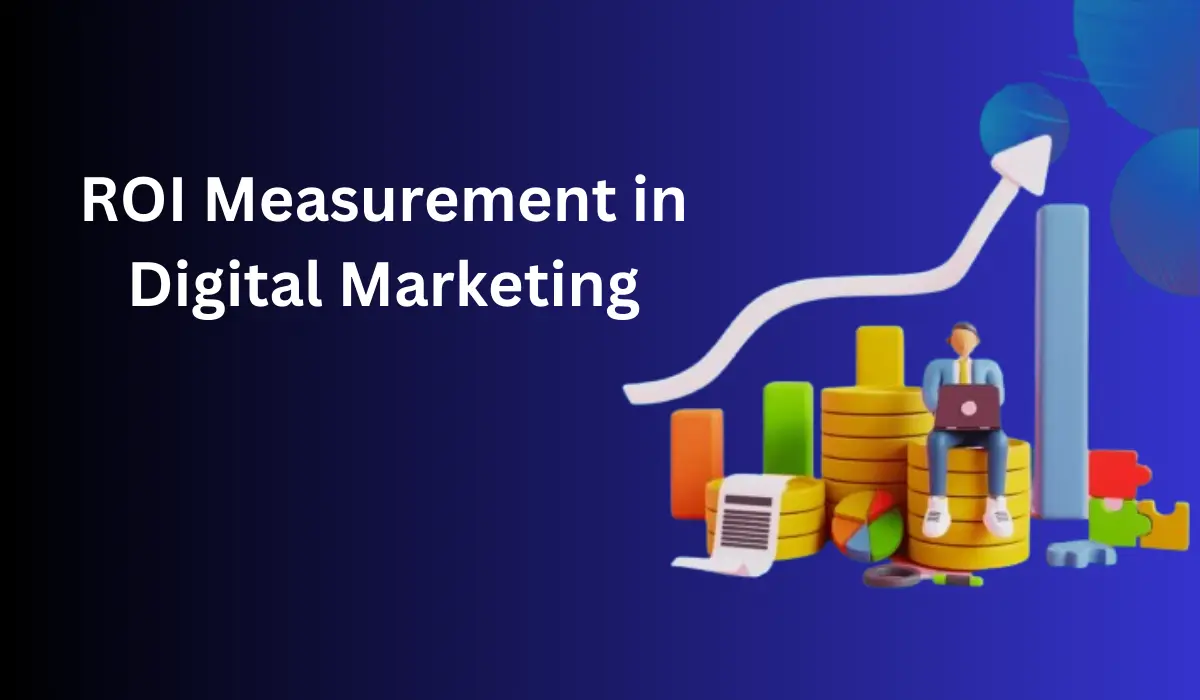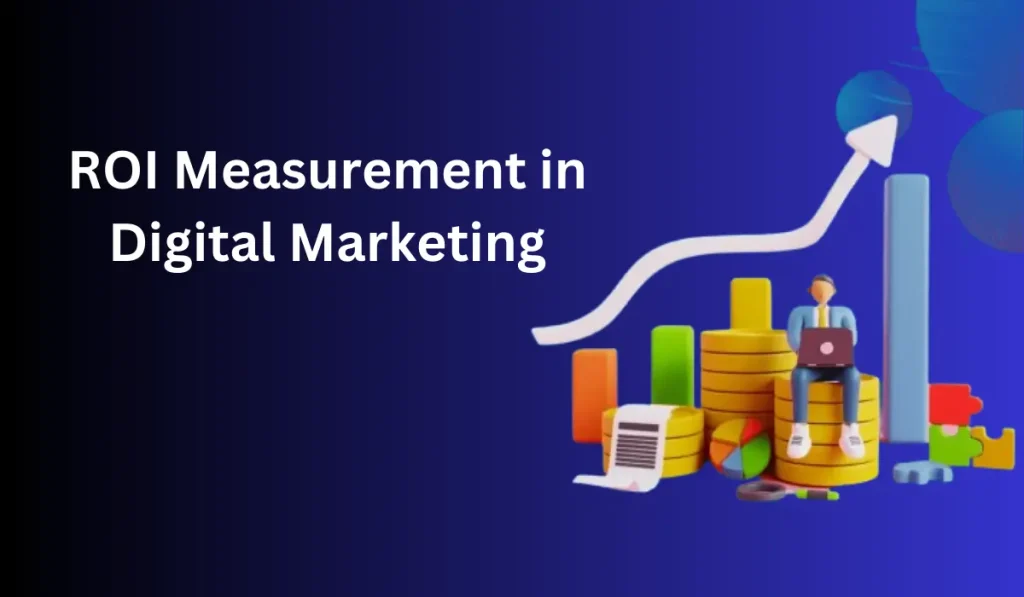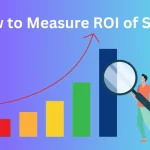In today’s hyper-connected world, digital marketing has become an indispensable tool for businesses looking to thrive in the competitive landscape. However, ROI measurement in digital marketing campaigns has become increasingly complex. In this article, we will delve into the intricacies of ROI measurement in digital marketing and explore strategies for effectively evaluating the success of your efforts.
Understanding ROI in Digital Marketing
ROI is a fundamental metric that assesses the profitability of an investment relative to its cost. In this context, ROI represents the revenue generated from marketing activities relative to the resources invested, including time, money, and effort. While ROI measurement may seem straightforward in theory, its application in the digital realm presents unique challenges due to the diverse array of channels and tactics involved.
Importance of ROI Measurement in Digital Marketing
In the dynamic and fast-paced world of digital marketing, businesses invest significant resources in various online channels and tactics to engage audiences, generate leads, and drive sales. Amidst this flurry of activity, one crucial aspect often stands out as the ultimate barometer of success: return on investment (ROI) measurement. Here’s why ROI measurement holds paramount importance in the realm of digital marketing:
Accountability and Performance Evaluation:
ROI measurement serves as a metric of accountability, enabling businesses to assess the performance of their digital marketing efforts. By quantifying the returns generated relative to the resources invested, businesses can evaluate the effectiveness of their marketing campaigns and make data-driven decisions to optimize future strategies.
Resource Allocation Optimization:
Understanding ROI allows businesses to allocate their resources – whether financial, time, or manpower – more effectively. By identifying high-performing channels and tactics that deliver the best ROI, businesses can allocate budget and resources strategically, maximizing their marketing impact and minimizing wastage.
Strategic Decision Making:
ROI measurement provides valuable insights that inform strategic decision-making processes. By analyzing ROI data, businesses can identify trends, patterns, and areas for improvement within their digital marketing efforts. This enables them to refine their strategies, experiment with new approaches, and optimize campaigns to achieve better results over time.
Justification of Marketing Budget:
In today’s competitive landscape, marketing budgets are subject to scrutiny and justification. ROI measurement provides tangible evidence of the effectiveness and profitability of digital marketing initiatives, helping businesses justify their marketing expenditures to stakeholders, executives, and investors.
Continuous Improvement and Optimization:
ROI measurement is not merely a one-time assessment but an ongoing process of continuous improvement and optimization. By consistently monitoring and analyzing ROI metrics, businesses can identify areas of underperformance, experiment with new tactics, and iterate on existing strategies to enhance ROI and achieve greater efficiency and effectiveness in their digital marketing endeavors.
Alignment with Business Goals:
Ultimately, ROI measurement ensures alignment between digital marketing activities and broader business objectives. By tying marketing efforts directly to measurable outcomes such as revenue, customer acquisition, or brand engagement, businesses can ensure that their digital marketing strategies contribute meaningfully to overall business success and growth.
Key Metrics for ROI Measurement
When measuring return on investment (ROI) in digital marketing, several key metrics play a crucial role in assessing the effectiveness and profitability of marketing campaigns. Here are some key metrics for ROI measurement in digital marketing:
Conversion Rate:
The conversion rate represents the percentage of website visitors who take a desired action, such as making a purchase, signing up for a newsletter, or filling out a contact form. A high conversion rate indicates that a marketing campaign is successfully engaging and persuading visitors to take action.
Customer Acquisition Cost (CAC):
CAC measures the average cost incurred to acquire a new customer through marketing efforts. It is calculated by dividing the total marketing expenses by the number of new customers acquired within a specific period. Comparing CAC to the lifetime value of a customer (LTV) helps determine the profitability of customer acquisition efforts.
Return on Ad Spend (ROAS):
ROAS evaluates the effectiveness of advertising campaigns by measuring the revenue generated for every dollar spent on advertising. It is calculated by dividing the revenue generated from advertising by the total advertising spend. A ROAS greater than 1 indicates that the campaign is generating more revenue than the cost of advertising.
Customer Lifetime Value (LTV):
LTV represents the total revenue generated from a customer over the entire duration of their relationship with the business. Understanding LTV helps businesses assess the long-term profitability of acquiring and retaining customers, guiding decisions related to marketing budget allocation and customer relationship management strategies.
Cost per Acquisition (CPA):
CPA measures the average cost incurred to acquire a single customer or lead through marketing efforts. It is calculated by dividing the total marketing expenses by the number of conversions (e.g., purchases or sign-ups). Monitoring CPA helps businesses evaluate the efficiency of their marketing channels and campaigns in driving conversions.
Click-Through Rate (CTR):
CTR measures the percentage of users who click on a specific link or advertisement relative to the total number of users who view it. It is commonly used to assess the performance of online ads, email campaigns, and search engine results. A higher CTR typically indicates greater engagement and relevance of the marketing content.
Return on Investment (ROI):
ROI quantifies the profitability of marketing investments by comparing the revenue generated to the costs incurred. It is calculated as (Revenue – Cost) / Cost * 100%. A positive ROI indicates that the marketing campaign generated more revenue than the cost of investment, while a negative ROI suggests a loss.
Engagement Metrics:
Engagement metrics, such as bounce rate, time on page, and social media interactions, provide insights into the effectiveness of marketing content in capturing and retaining audience attention. Monitoring engagement metrics helps businesses optimize their digital marketing strategies to enhance user experience and drive conversions.
Also Read
Implementing ROI Measurement Strategies in Digital Marketing
Implementing effective ROI measurement strategies in digital marketing is crucial for accurately assessing the profitability of marketing campaigns and optimizing resource allocation. Here’s a step-by-step guide on how to implement ROI measurement strategies in digital marketing:
Set Clear Objectives and Goals:
Define specific, measurable goals for your digital marketing campaigns, such as increasing sales, generating leads, or improving brand awareness. Clear objectives provide a framework for ROI measurement and guide strategic decision-making.
Identify Key Performance Indicators (KPIs):
Determine the key metrics that align with your business objectives and indicate success in achieving those goals. Common KPIs for ROI measurement include conversion rate, customer acquisition cost (CAC), return on ad spend (ROAS), and customer lifetime value (LTV).
Implement Tracking Mechanisms:
Set up tracking mechanisms to capture relevant data and measure the performance of your marketing campaigns. This may include implementing conversion tracking pixels, using analytics platforms such as Google Analytics, and integrating tracking codes into your website and digital assets.
Track and Attribute Conversions:
Track conversions across different marketing channels and touchpoints to accurately attribute conversions to specific campaigns and sources. Implement multi-touch attribution models to understand the contribution of each channel to conversions along the customer journey.
Calculate ROI for Each Channel:
Calculate ROI for each marketing channel independently to assess its effectiveness in driving revenue and achieving business objectives. Consider factors such as campaign costs, revenue generated, and customer acquisition metrics to calculate ROI accurately.
Optimize Campaign Performance:
Analyze ROI data to identify high-performing channels, tactics, and campaigns, as well as areas for improvement. Allocate budget and resources strategically based on ROI insights to optimize campaign performance and maximize return on investment.
Experiment and Iterate:
Continuously test and experiment with different strategies, tactics, and messaging to improve ROI over time. Use A/B testing, ad variations, and audience segmentation to refine your campaigns and identify the most effective approaches for driving results.
Integrate Data Sources:
Integrate data from various sources, including CRM systems, email marketing platforms, and advertising networks, to comprehensively view customer interactions and campaign performance. Use data integration tools and platforms to centralize and analyze data effectively.
Monitor and Adjust:
Regularly monitor ROI metrics and performance indicators to track progress toward your goals and identify any deviations or opportunities for optimization. Adjust your strategies and tactics accordingly to maintain or improve ROI performance.
Report and Communicate Results:
Communicate ROI results and insights to stakeholders, executives, and team members to demonstrate the impact of digital marketing efforts on business outcomes. Visualizations, dashboards, and reports convey key findings and facilitate data-driven decision-making.
Conclusion
Measuring ROI in digital marketing is essential for evaluating the effectiveness of marketing efforts and optimizing resource allocation. By tracking key metrics, setting clear objectives, and leveraging analytics tools, businesses can gain valuable insights into the performance of their digital marketing campaigns and make informed decisions to drive success. Mastering ROI measurement in an ever-evolving digital landscape is crucial for staying competitive and achieving sustainable growth.





